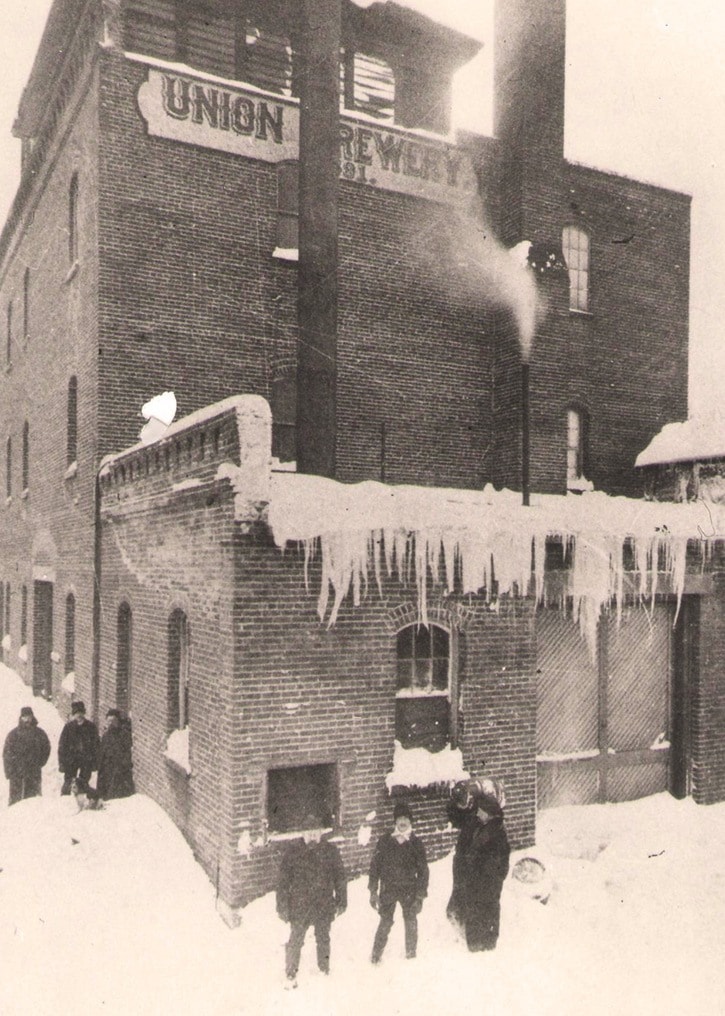Even before Nanaimo was Nanaimo, people here were raising a glass.
The history of breweries in the Harbour City can be traced back more than 150 years, and with it, tales of drunken sailors and bootleggers.
The Union Brewing Company, on the property that is now Nanaimo City Hall, was the most successful operation, but there were a handful of others, including the Nanaimo Brewery on Mill Street, the Lansdowne and Empire breweries on Comox Road and the Red Lion Brewery at Nanaimo River bridge in Cedar.
Sean Enns considers himself a student of B.C. beer history and gave a presentation on Nanaimo’s historical breweries at Vancouver Island University last year. Finding information was challenging, he said, because some of the companies changed their names and their branding.
“There’s not a lot of evidence that they ever existed, with the exception of Union,” Enns said.
But he persevered in his research, and remains interested in the subject.
“It’s kind off a cool way to create a sense of place. This was a way for me to connect contextually to Nanaimo’s past, I suppose,” he said.
Nanaimoites have always been a thirsty bunch. According to the Nanaimo Daily Free Press, a member of the legislature pointed out in 1858 that no liquor licences existed in the community then, though “it is well known that large quantities of spirituous liquors are consumed there.”
The Millstream Brewery, built in 1864, was the first local brewery, but “prospered poorly,” according to House of Suds: A History of Beer Brewing in Western Canada by William Hagelund. Business didn’t really pick up until the 1880s, when the Nanaimo Brewery became successful enough that its brewmaster John Mahrer was able to build the Nanaimo Opera House with the profits. Nanaimo Brewing Co. bought out Red Lion, then merged with Union in 1892.
Beer was usually enjoyed responsibly, but not always. The Free Press detailed an incident in 1892, when nine sailors from the Glory of the Seas berthed late at night and found that the saloons had all closed. They happened upon the Empire and found the brewmaster there, working late.
“When he opened the door, he was frightened to see so many men standing there, ran and hid himself in a broom closet,” the article noted.
The sailors set about drinking right on the floor of the brewery, and, not intending to steal, left $1.80, “a small token for the five dozen or so bottles they had consumed.”
They were arrested and charged with being drunk and disorderly, and the brewmaster was fined, too, for selling liquor after hours, since he had kept the $1.80.
Union’s management had, perhaps, more business acumen.
Led by brewmaster Henry Reifel, the company operated for more than 25 years, from 1891-1918. UBC beer, as it was known, could be purchased in embossed bottles, clear, olive, amber and red, custom-ordered from England. A Free Press advertisement in 1909 claimed “the UBC beer has proved beyond a doubt that it has the elements of strength and vigour in it.”
Union’s four-storey brick building was “vaguely reminiscent of a medieval fortress,” noted the Free Press. According to the Nanaimo Daily Herald, Union had a steam elevator, a rooftop malt grinder, a 4,000-litre copper kettle, 15 wooden fermenting vats and 28 kegs, some of which could hold 11,000L, in a basement cold storage unit that was used by “all the butchers and grocers in the city.”
Prohibition brought about an end of the beer brewing industry in Nanaimo. Union’s equipment was sold to the Anglo-Japanese Brewing Company of Yokohama in 1923, though Reifel retained the UBC brand when he relocated to Vancouver. Stephen Schneider’s Iced: the Story of Organized Crime in Canada suggests that Reifel and his son went on to face smuggling charges in the U.S. in 1934, among other rumoured bootlegging.
So one way or another, the beer kept flowing. It’s interesting, Enns said, that Nanaimo, and B.C., for that matter, had so many breweries at the turn of the century, and it shows how things have come full circle to today’s craft beer scene.
“There was a boom back then, and then everything kind of amalgamated into the big macro-breweries,” he said. “And now we’re kind of seeing some diversity again.”
sports@nanaimobulletin.com
